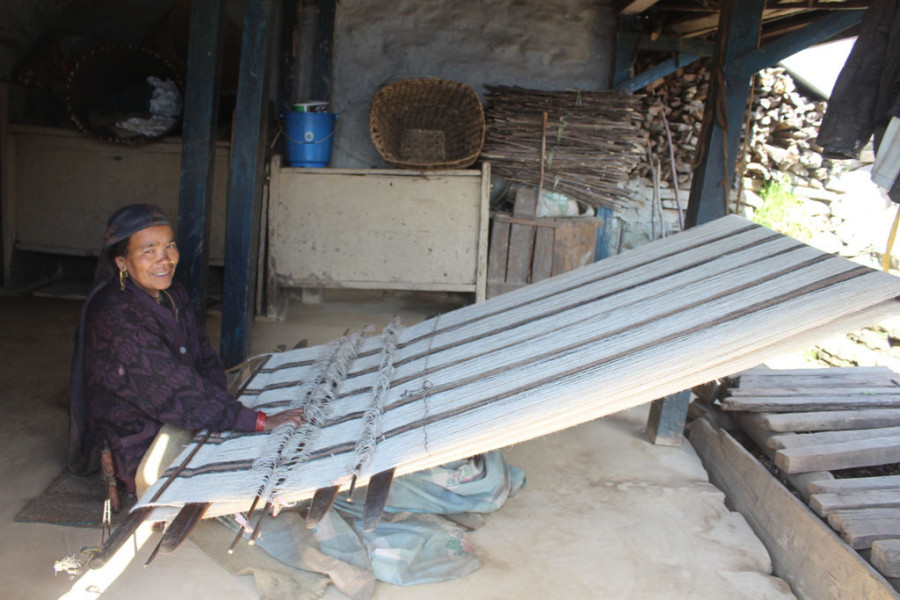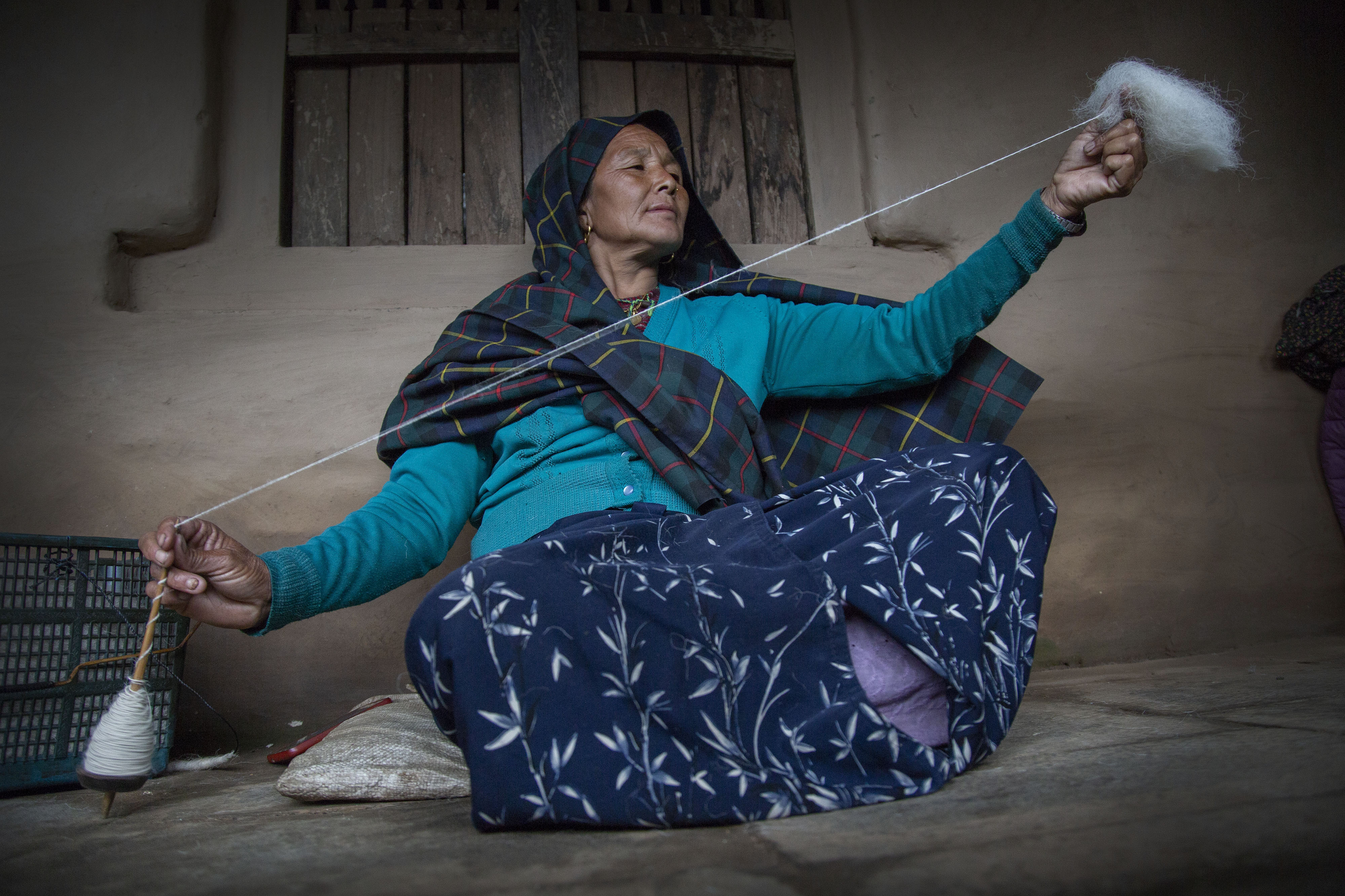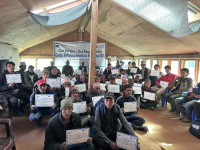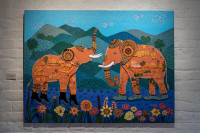Culture & Lifestyle
In Gorkha’s highlands, the bakhu-weaving tradition is slowly dying
Because the task demands a lot of labour, many villagers are looking for easier alternatives.
Hariram Upreti
After walking a day and a half uphill from his village in Gumda, Maila Gurung reaches Lapsibot, where he shepherds his 250 sheep in grazing land—known as Kharka in the local tongue. Although it is tough to live away from his home and family, Gurung comes up here twice a year with his sheep, because he needs them to eat well. If his sheep eat well, Gurung will be able to sell their wool in his village—where it will go like hot cakes.
“We earn a decent income by just selling the wool,” says Ram Maya, Maila’s wife, who sells the wool that her husband sends her from Lapsibot. “Everyone needs sheep wool to produce bakhu, which is used by almost everyone in every household.”
But the Gurungs are just one of the few families in Gumda who are still taking up traditional shepherding to sustain their livelihoods. The village that is located in the north of the Gorkha district requires one to take a day’s walk from Barpak during summer and monsoon. During winter, off-road vehicles occasionally reach this mountainous village.
Because the work demands so much labour, many have moved to easier options of livelihood and education. This has resulted in an acute shortage of sheep wool in the village, which is the primary raw material to weave Bakhu, a traditional garment used by the villagers of Gumda facing an acute shortage.
“I weave two bakhu over the course of a year,” says Ram Maya. According to her, bakhu is a necessity for people living in and around her village. Locals from many villages in Dharche and Chumanubri rural municipality wear the traditional piece of clothing.
Bakhu is akin to a large shawl or a poncho that people wrap around their body to protect themselves from harsh weather conditions in the mountains. Its ubiquity is unparalleled.
-New.jpg)
“Every household should compulsorily have bakhu. Apart from wearing it as a shawl, it is used as a carpet for guests to sit on, laid over beds or used as blankets during winter,” says Bal Maya Gurung, a 60-year-old native. “Sometimes, we even use it for decoration.”
Although women from the village prefer to make their own bakhu, they occasionally also sell them, for Rs15-20 thousand per piece. But Bal Maya, who has been weaving bakhu since she was 14 years old, says that they have never weaved bakhu to specifically sell it to others.
“It is not easy to weave bakhu, as it is a very hard and long process,” she says. “And with the scarcity of sheep wool in recent years, we don’t get the value of our hardships anyway.”
The process of making bakhu is laborious: after receiving the sheep wool, women drench it in cold water and air-dry it. The wool is then combed thoroughly to get rid of any dust or foreign particles. When the strands of the wool are thinly separated, the women then make thread from it—which is then fixed in the yarn, ready to weave.
The work, however, doesn’t stop there. After the weaving is complete, the bakhu is washed with hot water and dried over fire for the following weeks before it is ready for use. Locals say that after the bakhu goes through all these steps, it can become water-resistant.
“It takes around a month to six months to weave one bakhu,” says Ram Maya. “We only sell if we can produce in excess.”
The women in Gumda are able to make bakhu only after they are done with household chores, which means it takes them longer to complete weaving one bakhu.
There are two types of bakhu—plain and coloured. The locals don’t use any artificial colouring but the colour depends upon the colour of the wool.
“The purpose of bakhu remains the same, the coloured ones only add aesthetic value,” says Bal Maya.
Apart from its practical use in the mountain region, the bakhu also carries cultural significance, say locals. “When I was young, one of the major questions asked by the families from possible groom side was whether the girl knows how to weave Bakhu,” Bal Maya says.

Despite its importance, Kanchhi Gurung from Laprak also agrees with Bal Maya: the production of bakhu has reduced significantly. bakhu used to be produced far more in number than what the villagers have been producing lately.
“For the younger generation, it has also become something that needs a lot of time and effort but doesn’t yield any monetary value,” she says.
With the growing scarcity of sheep wool to weave bakhu combined with easy accessibility to ready-made garments in the nearby markets, Kanchhi says the trend is slowly dying.
“If villagers could see that sheep herding as a lucrative business, and if new technology that would weave Bakhu faster was introduced, then maybe the tradition can be saved,” says Kanchhi.




 8.12°C Kathmandu
8.12°C Kathmandu.jpg)















